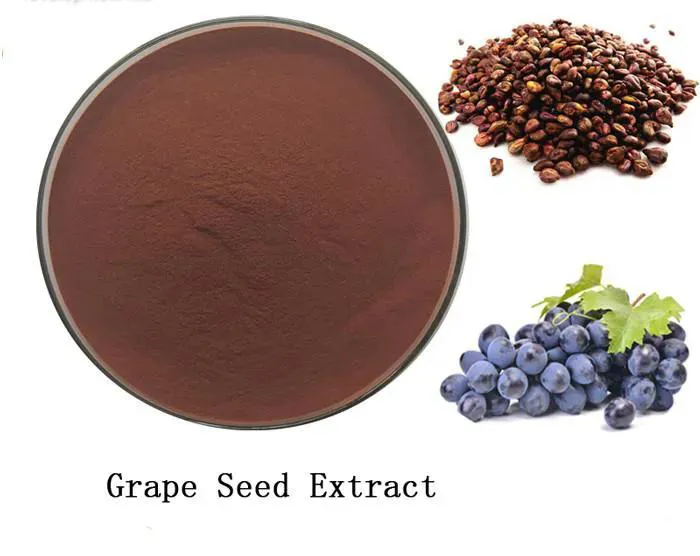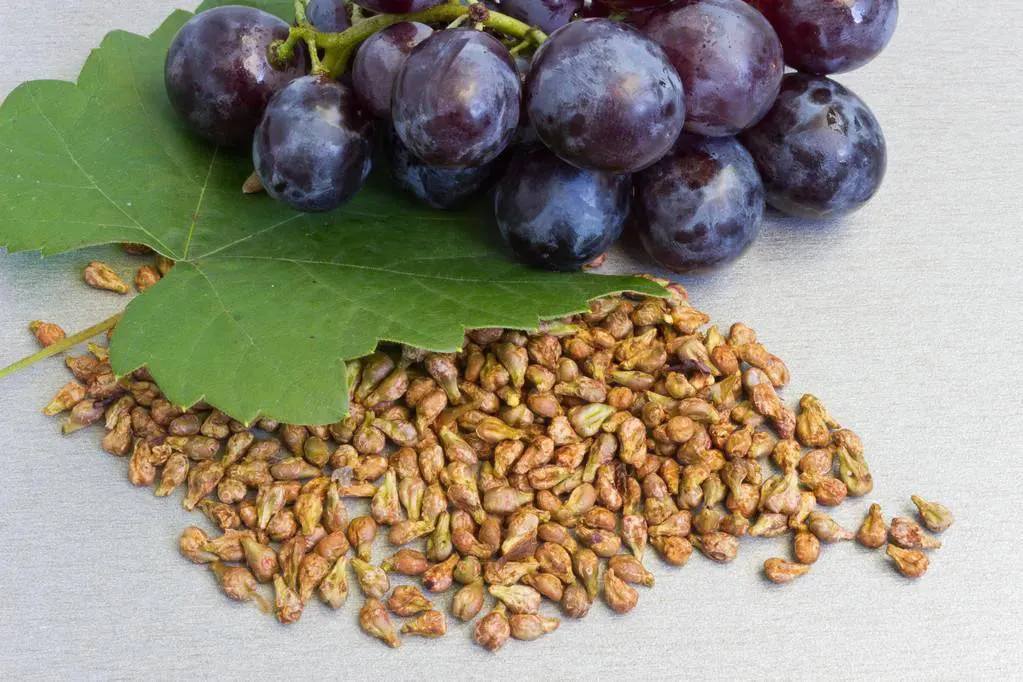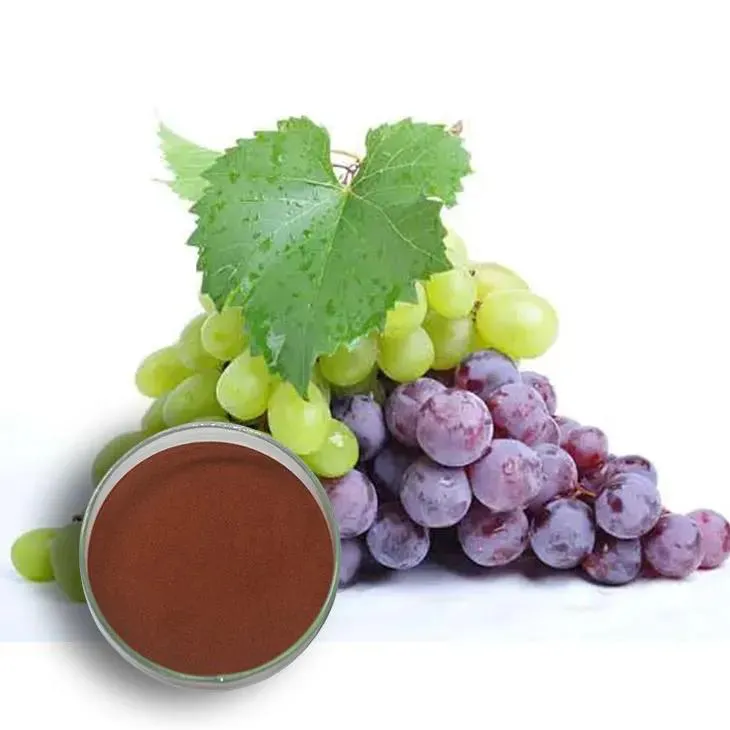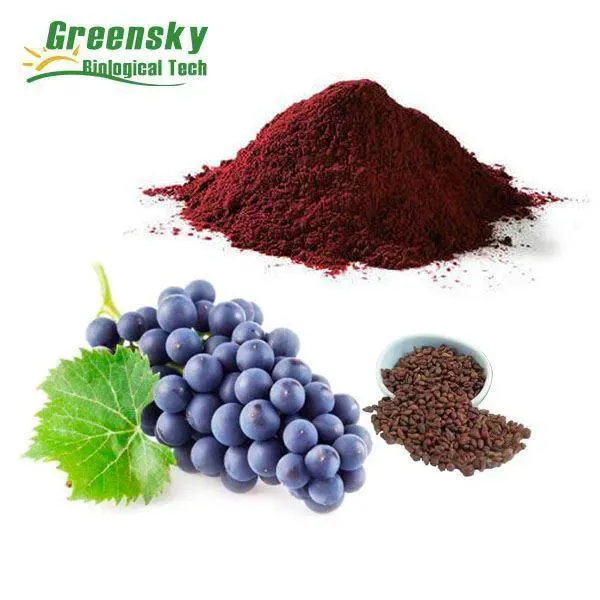- 0086-571-85302990
- sales@greenskybio.com
Harnessing the Power of Polarity in Grape Seed Extract for Health Benefits
2024-08-15

Introduction
Grape Seed Extract has been increasingly recognized as a remarkable natural supplement in the realm of health and wellness. It is derived from the seeds of grapes, which are by - products of the winemaking process. Over the years, extensive research has been conducted on Grape Seed Extract, uncovering a plethora of health benefits. One of the most fascinating aspects is the role of polarity within the extract. This article aims to explore in detail how the power of polarity in Grape Seed Extract can be harnessed for various health benefits.

The Concept of Polarity in Grape Seed Extract
Polarity refers to the distribution of electrical charge within a molecule. In the case of grape seed extract, the molecules possess a certain degree of polarity that is of great significance. The polar nature of the compounds in grape seed extract is due to the presence of various functional groups such as hydroxyl (- OH) groups. These polar groups interact with other molecules in the body in unique ways, which ultimately determine the biological activities of the extract.

Enhanced Antioxidant Activity
Antioxidants play a vital role in maintaining the health of the body. They are responsible for neutralizing free radicals, which are highly reactive molecules that can cause oxidative stress. Oxidative stress has been linked to a wide range of diseases including cancer, heart disease, and neurodegenerative disorders.
Interaction with Free Radicals
The polar nature of grape seed extract enables it to interact more effectively with free radicals. The antioxidant compounds in the extract, such as proanthocyanidins, have a structure that is conducive to donating electrons to free radicals. This electron donation process stabilizes the free radicals, preventing them from causing damage to cells and tissues. The polarity of the extract molecules allows for better access to the sites where free radicals are generated, enhancing the overall antioxidant activity.
Synergistic Effects
Another important aspect of the enhanced antioxidant activity is the synergistic effects of the polar components in grape seed extract. Different antioxidant compounds within the extract work together in a coordinated manner. For example, some polar antioxidants may act as primary scavengers of free radicals, while others may enhance the activity of the primary antioxidants or protect them from degradation. This synergy results in a more potent antioxidant effect compared to the individual components acting alone.

Anti - Inflammatory Effects
Inflammation is a natural response of the body to injury or infection. However, chronic inflammation can lead to various health problems such as arthritis, inflammatory bowel disease, and cardiovascular diseases. Grape seed extract has shown promising anti - inflammatory properties, which are closely related to its polarity.
Modulation of Inflammatory Signaling Pathways
The polar molecules in grape seed extract can interact with key components in the inflammatory signaling pathways. For instance, they can interfere with the activation of nuclear factor - kappa B (NF - κB), a transcription factor that plays a central role in the regulation of inflammatory genes. By inhibiting the activation of NF - κB, grape seed extract can reduce the production of pro - inflammatory cytokines such as interleukin - 1β (IL - 1β) and tumor necrosis factor - alpha (TNF - α). This modulation of the inflammatory signaling pathways helps to alleviate the inflammatory response.
Interaction with Immune Cells
Grape seed extract also interacts with immune cells in an anti - inflammatory manner. The polar components can influence the behavior of macrophages, which are immune cells involved in the inflammatory process. Macrophages can be polarized into different phenotypes, such as M1 (pro - inflammatory) and M2 (anti - inflammatory). Grape seed extract has been shown to promote the polarization of macrophages towards the M2 phenotype, which is associated with anti - inflammatory and tissue - repairing functions. This interaction with immune cells further contributes to the anti - inflammatory effects of the extract.

Benefits to Cardiovascular Health
The cardiovascular system is one of the most important systems in the body, and maintaining its health is crucial for overall well - being. Grape seed extract, through its polar properties, can have a positive impact on cardiovascular health.
Improvement of Endothelial Function
The endothelium is the inner lining of blood vessels. Dysfunction of the endothelium is an early event in the development of cardiovascular diseases. Grape seed extract can improve endothelial function, in part due to its polar components. The polar molecules can interact with endothelial cells, enhancing the production of nitric oxide (NO). Nitric oxide is a vasodilator that helps to relax blood vessels, reducing blood pressure and improving blood flow. By promoting the production of NO, grape seed extract helps to maintain the normal function of the endothelium.
Anti - Atherosclerotic Effects
Atherosclerosis is a major cause of cardiovascular diseases. Grape seed extract has anti - atherosclerotic effects, which are related to its polarity. The polar compounds in the extract can prevent the oxidation of low - density lipoprotein (LDL), which is a key step in the development of atherosclerosis. Oxidized LDL is more likely to be taken up by macrophages in the arterial wall, leading to the formation of foam cells and the development of atherosclerotic plaques. By inhibiting LDL oxidation, grape seed extract can reduce the risk of atherosclerosis.
Anti - platelet Aggregation
Platelet aggregation is another important factor in cardiovascular diseases. Excessive platelet aggregation can lead to the formation of blood clots, which can block blood vessels and cause heart attacks or strokes. Grape seed extract has been shown to possess anti - platelet aggregation properties. The polar nature of the extract allows it to interact with platelets, inhibiting their activation and aggregation. This anti - platelet effect helps to maintain the normal blood flow and reduce the risk of thrombotic events.
Optimal Utilization of Grape Seed Extract's Polarity
To fully harness the power of polarity in grape seed extract for health benefits, several factors need to be considered.
- Quality and Purity of the Extract: High - quality grape seed extract with a high content of active polar components is essential. The extraction process should be carefully controlled to ensure the integrity of the polar compounds. Contaminants or impurities in the extract may interfere with the polar interactions and reduce the effectiveness of the extract.
- Dosage and Administration: Determining the appropriate dosage of grape seed extract is crucial. The optimal dosage may vary depending on factors such as age, gender, and health status. Additionally, the method of administration, whether it is oral ingestion or topical application (in some cases), can also affect how the polar components interact with the body.
- Combination with Other Nutrients: Grape seed extract may work synergistically with other nutrients. For example, combining it with vitamin C, which is also an antioxidant, may enhance the overall antioxidant activity. Understanding these potential synergistic interactions can help in formulating more effective health regimens.
Conclusion
In conclusion, the polarity in grape seed extract is a remarkable feature that underlies many of its health - promoting effects. From enhanced antioxidant activity to anti - inflammatory effects and benefits to cardiovascular health, the polar nature of the extract plays a crucial role. By understanding and optimizing the utilization of this polarity, we can better harness the power of grape seed extract for improving human health. However, further research is still needed to fully elucidate the complex mechanisms involved and to develop more targeted and effective applications of grape seed extract in the field of health and medicine.
FAQ:
What is the significance of polarity in grape seed extract?
Polarity in grape seed extract is significant as it plays a crucial role in various biological processes. It enhances antioxidant activity, which is important for combating oxidative stress in the body. It also contributes to anti - inflammatory effects and can optimize the extract's impact on cardiovascular health, promoting better heart function and circulation.
How does polarity in grape seed extract enhance antioxidant activity?
The exact mechanism through which polarity enhances antioxidant activity in grape seed extract is complex. However, it is believed that the polar components within the extract interact with free radicals in a way that stabilizes them and prevents them from causing oxidative damage. This interaction may be related to the chemical structure and properties of the polar substances in the extract.
Can the polarity - related anti - inflammatory effects of grape seed extract treat specific diseases?
While the polarity - related anti - inflammatory effects of grape seed extract show potential in alleviating various inflammatory conditions, it cannot be said to treat" specific diseases on its own. However, it may be a useful supplement in a comprehensive treatment plan for conditions such as arthritis, where inflammation is a major factor. More research is needed to fully understand its role in disease treatment.
How can we harness the polarity of grape seed extract for cardiovascular health?
To harness the polarity of grape seed extract for cardiovascular health, proper extraction and formulation methods need to be used to preserve the polar components. This may involve using specific solvents or extraction techniques. Additionally, the appropriate dosage and combination with other nutrients or medications need to be studied further. In general, consuming grape seed extract as part of a balanced diet and healthy lifestyle may help promote better heart function and circulation through its polarity - related effects.
Are there any side effects associated with using grape seed extract due to its polarity?
When used in appropriate amounts, there are generally no significant side effects associated with grape seed extract due to its polarity. However, some people may experience mild gastrointestinal discomfort such as nausea or diarrhea. High - dose or long - term use may also interact with certain medications, so it is important to consult a healthcare provider before starting to use grape seed extract, especially if you are on other medications.
Related literature
- "The Role of Grape Seed Extract in Health: A Review of Polarity - Related Properties"
- "Polarity in Natural Supplements: Grape Seed Extract as a Case Study"
- "Harnessing Grape Seed Extract's Polarity for Optimal Health Benefits"
- ▶ Hesperidin
- ▶ Citrus Bioflavonoids
- ▶ Plant Extract
- ▶ lycopene
- ▶ Diosmin
- ▶ Grape seed extract
- ▶ Sea buckthorn Juice Powder
- ▶ Fruit Juice Powder
- ▶ Hops Extract
- ▶ Artichoke Extract
- ▶ Mushroom extract
- ▶ Astaxanthin
- ▶ Green Tea Extract
- ▶ Curcumin
- ▶ Horse Chestnut Extract
- ▶ Other Product
- ▶ Boswellia Serrata Extract
- ▶ Resveratrol
- ▶ Marigold Extract
- ▶ Grape Leaf Extract
- ▶ New Product
- ▶ Aminolevulinic acid
- ▶ Cranberry Extract
- ▶ Red Yeast Rice
- ▶ Red Wine Extract
-
Hericium erinaceus extract powder
2024-08-15
-
Echinacea Extract
2024-08-15
-
Nettle leaf extract
2024-08-15
-
Bayberry Extract
2024-08-15
-
Peppermint Extract Powder
2024-08-15
-
Astaxanthin
2024-08-15
-
Curcumin
2024-08-15
-
Andrographis Paniculata Extract Powder
2024-08-15
-
Beta Carotene
2024-08-15
-
Thunder God Vine Extract
2024-08-15





















